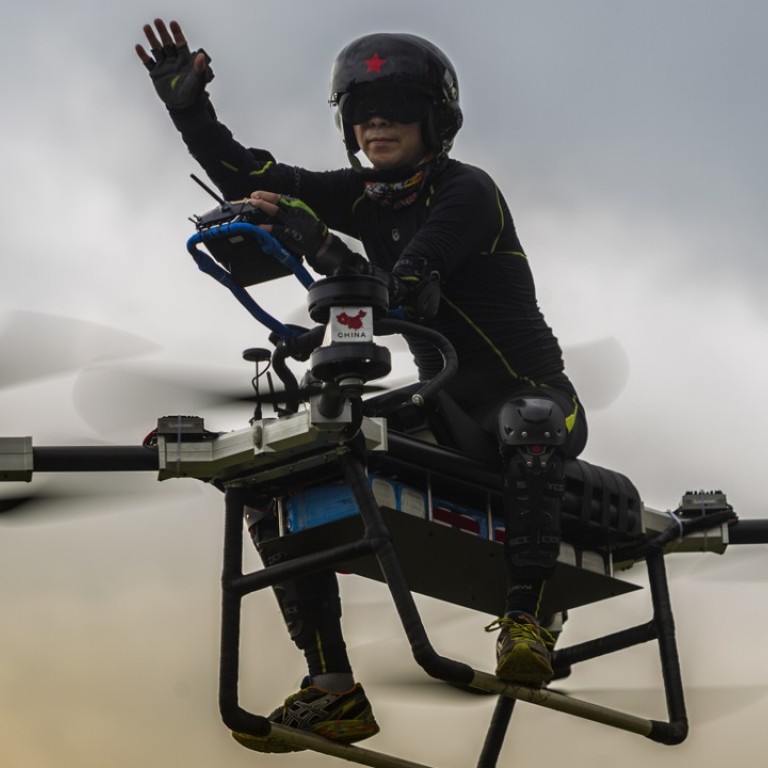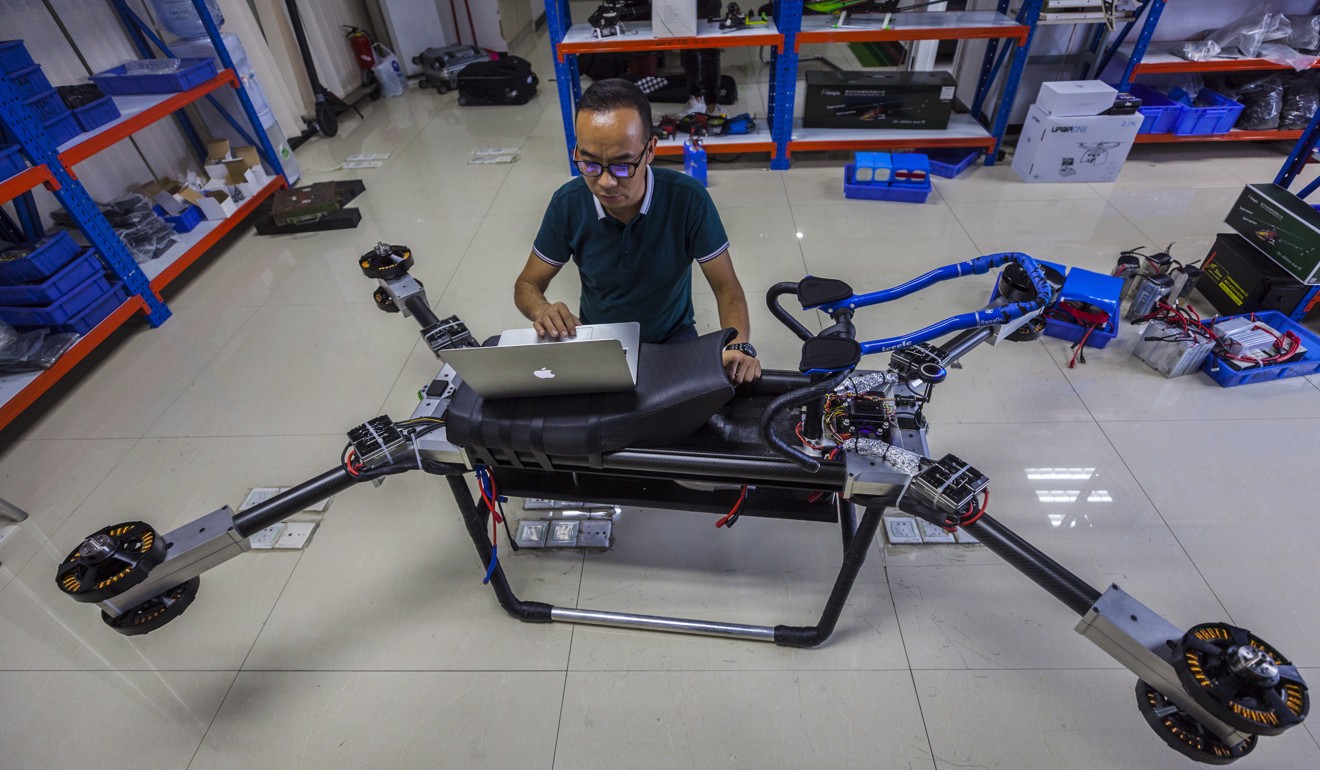
Back to the future: hop on board the ‘flying scooter’ inspired by a Chinese legend
Self-taught inventor hopes to one day bring his Somersault Cloud to the masses
When Zhao Deli was young, his idol was the Monkey King, a character from the Chinese classic A Journey to the West who was able to conjure up a cloud with a somersault and stand on it to fly above everyone else.
Inspired by his childhood memories of watching a cartoon version of the legend, the self-taught engineer has now developed his own prototype “flying scooter”.
The 40-year-old native of Hunan province has been working on the project for the past two years, stopping all other work and spending around 1 million yuan (US$145,000) of his savings to bring it to fruition.
He concedes that his design – which he hopes to name the Somersault Cloud – does not look much like a scooter at present, but plans to enhance the exterior design once he has finished safety tests.
He hopes one day the model will enter mass production, but before that, he would need to pass a series of government inspections and satisfy the regulatory authority.
China’s robotic spy birds take surveillance to new heights
So far he has carried out more than 1,500 test flights – the latest of which he carried out on Sunday on a patch of grassland in Dongguan city in the southern province of Guangdong.
The area is Zhao's test ground for all his flights and the waist-high shrubbery is littered with broken pieces of equipment that testify to his earlier setbacks.

After assembling the equipment with the help of a couple of friends, he changed into his black flying uniform – complete with helmet, googles and elbow and knee protectors – before straddling the saddle and grasping the handlebars that includes a thumb board he controls with his thumbs.
As the rotors kicked into action, causing the grass to ripple like waves, he then gestured for the small crowd of spectators to move out of the way before the aircraft slowly ascended into the air.
China’s Ehang broke the world drone display record – but the aerial bots were out of sync
Zhao hovered above the crowd for a few moments before turning the aircraft and flying off into the horizon, quickly becoming nothing more than a small black dot.
A few seconds later the sounds of the motors returned and Zhao appeared back into view, waving to the crowd before giving a thumbs-up.
“It's awesome, right?” he asked. The crowd broke out in applause, and nearby villagers who stood over the wall secretly filming tucked away their phones, looking pleased.

Zhao has never formally studied electronics or robotics and is entirely self-taught.
After graduating from middle school in 1998, he moved to Dongguan to work in a golf club and later took on a variety of jobs, such as security guard, insurance salesman and property agent.
In 2008, when drones went mainstream in China he got interested in the subject and started buying books and conducting research online.
In 2010, he started a company that sells drones before he saw a video two years ago about a design for a flying motorcycle and decided to try to build his own model.
China’s space ambitions reiterated with launch of its first rocket developed by private firm
“It's like you're taking a drone and blowing it up many times to scale,” he said. “However, the technology involved is quite different.”
The prototype he has developed uses a quadruple axis structure and eight rotors – two on the end of each axis – that lift it into the air in a similar fashion to helicopter blades.
At present he claims the lithium battery-powered scooter can spend up to 30 minutes in the air, has a top speed of 72km per hour (45mph) and can reach a height of 3,000 metres (9,800ft).

Because the power needed for a large aircraft differs greatly from that of a small one, Zhao needed to experiment with the control system.
“There are some companies that make drones or might experiment with flying scooters, but they'll never share their data with you, so I had to test it all by myself,” he said.
Over the past two years of testing, Zhao carried out hundreds of unmanned flights before deciding it was safe to take to the air himself.
During that time as he tested ways to make the vehicle ascend, descend and spin he suffered numerous crashes and setbacks.
China sends seeds into space to grow trees that can help hold back desert
Even now it may take a long time before Zhao’s design passes the government inspection.
While his current tests do not need a permit, to fulfil his dream of bringing it to a mass market, the vehicle will need to pass inspection by the Civil Aviation Administration and obtain an airworthiness certificate.
There have been many pioneers working on their own flying scooters or even helicopters, but so far no one has been granted a certificate.
In 2017, Guangzhou-based company Ehang obtained a Special Flight Permit, which allows them to conduct more advanced testing and conduct public displays.
Zhao still has more trials to carry out, and he must test the flying scooter in a variety of locations – such as high-altitude, high-pressure and desert environments – before applying for certification.
But he firmly believes his design can one day enter mass production. “It's not just to realise my own dream, but also many others' dream of flying,” he said.

.jpg?itok=H5_PTCSf&v=1700020945)